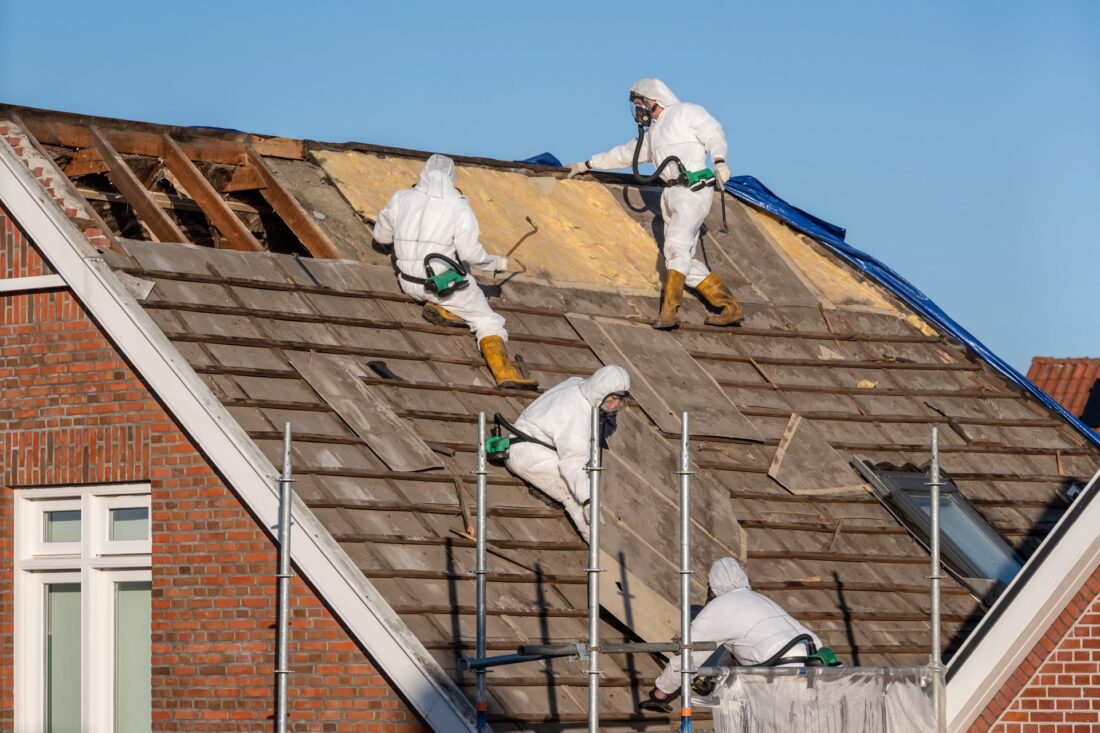The CoreLogic Loan Performance Insights report features an interactive view of our mortgage performance analysis through December 2024. Measuring early-stage delinquency rates is important for analyzing the health of the mortgage market. To more comprehensively monitor mortgage performance, CoreLogic examines all stages of delinquency as well as transition rates that indicate the percent of mortgages moving from one stage of delinquency to the next. The report is published quarterly with coverage at the national, state, and Core Based Statistical Area (CBSA)/Metro level and includes transition rates between states of delinquency and separate breakouts for 120+ day delinquency. Chart 1: Overall U.S. mortgage delinquency rate and year-over-year change, December 2024 “National-level delinquency rates for December show strong performance from the mortgage market with 97% of borrowers making on-time payments. The rate is unchanged from a year earlier and a bit better than a month earlier. Drilling down to the metro level …
Clareity25: Quick Recap – Dare Greatly
Once again – even after a quarter of a century – Clareity25 MLS workshop did not disappoint. The venue at the Westin Kierland Resort in Scottsdale was fantastic. The rooms were great, those who played in the Monday golf scramble had all they could handle, and the evening outdoor receptions were terrific. The conference’s theme was “Dare Greatly,” and together, more than 300 attendees did just that. Kudos to the team at CoreLogic for hosting a polished and professional event. Clareity followed its customary format: optional golf or alternative adventures on Monday, Welcome Reception on Monday night, a full day of sessions on Tuesday followed by an evening reception celebration, and a half day of meetings on Wednesday – a perfect schedule. Clareity workshop founder Gregg Larson kicked off the event with this technology and trends update. He had fresh content from CES, covering a remarkable list of innovative products …
December Annual Price Growth Reverses Course, Up 3.9% YOY
US CoreLogic S&P Case-Shiller Index shows housing market malaise persists in the Southeast, but large metros like Boston, Miami, and Chicago maintain price power This December both sellers and buyers took a step back as 2024 ended in a cooler fashion that is comparable to December 2023. The end of 2024 saw the share of de-listings increase to a level not seen since after the Great Financial Crisis, and the time homes spent on the market rose sharply, hitting the highest level since the onset of the pandemic. Although many housing market indicators are generally tracking pre-pandemic trends, there is a lot of trepidation and anticipation about the spring homebuying season. So far, early housing market indicators for 2025 suggest that the spring homebuying season may look very similar to 2024. Although the availability of more for-sale homes is a positive sign, buyers are increasingly cautious amid economic apprehension, policy …
US Single-Family Rent Index – February 2025
Annual U.S. rent growth increased at the lowest rate in about four years in December 2024, climbing just 1.8% year over year. Rent growth slowed throughout 2024 after being frontloaded at the beginning of the year. Washington, DC, saw the highest increase year-over-year in December, while Detroit fell into the number two slot. Click here to read CoreLogic’s full SFRI report with December 2024 data, featuring commentary from Principal Economist Molly Boesel. All archived SFRI reports are available at this home page, while regular housing market reports and blog posts from CoreLogic’s Office of the Chief Economist can be found here.
New Tariffs, Higher Costs — Who Really Pays the Price?
A Conversation With Jay Thies and Pete Carroll As the U.S. waits for the final decision on the fresh tariffs imposed on Canadian, Mexican, and Chinese imports, the housing industry is bracing for the impact of this policy decision. With material costs already a growing concern, these new trade policies could send ripples through supply chains, development timelines, and affordability. Tariffs on steel, lumber, concrete and other key building materials have the potential to drive up construction costs, exacerbating an already tight housing market. Builders and developers may need to rethink sourcing strategies, while policymakers weigh the broader economic consequences of trade restrictions on inflation and consumer spending. From rising home prices to shifting supply chains, host Maiclaire Bolton Smith sits down with industry experts Pete Carroll CoreLogic’s, EVP of Public Policy and Industry Relations, and Jay Thies CoreLogic’s Vice President of Pricing Analysis and Delivery to explore the immediate …
Artificial Intelligence in the Mortgage Landscape Infographic
Master AI with a new kind of ebook from CoreLogic As artificial intelligence (AI) continues to impact industries around the world, mortgage professionals are racing to harness its power and optimize their operations. But what does optimization look like in practice? Whether you ’re looking for an introduction to AI or ready to execute a sophisticated AI strategy , experts from CoreLogic have answers for you. We ’ve created a powerful, ever-evolving book that explores the specific ways mortgage professionals can leverage AI to enhance their business practices. The current state of AI in the mortgage industry AI has revolutionized how mortgage professionals leverage data. Over the last several years, critical data and the number of data sources available to stakeholders have increased exponentially. The wealth of readily available information can be game-changing, but only if you have the mechanisms necessary to extract relevant information. AI-driven software can process large …
2025 Severe Convective Storm Risk Report
The meteorologist on the news reported a hailstorm brewing with three-inch hail across northern Texas, central Oklahoma, and southern Nebraska. Almost immediately, the claims began. Some were clearly related to the current storm, but others raised suspicions of pre-existing hail damage. To prepare for the avalanche of claims, adjusters across the area began calculating the number of impacted roofs, but the data just wasn’t accurate enough — yet. That left many worried about the long-term impact of the storm. After all, it was only the start of the season, and underwriting ratios were already in the red. Granular analysis from our vast repository of macro seasonal trends and potential worst-case scenarios are already helping insurers decode the risk associated with the upcoming severe convective storm season. We synthesize our insights to make it simple to evaluate future potential losses and model profitability. While severe convective storm activity is a year-long …
Why Is Flood Risk Surpassing Fire Risk in California?
Chart of the Month — February 2025 Overview By 2050, over 1 million homes in Los Angeles, San Diego, and San Francisco with low flood risk will see their flood risk rise higher than their fire risk. Flood risk increases in areas recently burned by wildfire. Even without assuming worst-case climate scenarios, homes with very low flood risk will have risk increase by 40 points or more by 2050. Risks from natural hazards can be interdependent. The fires in Los Angeles this January followed two years of wet winters which encouraged the vegetation growth that became wildfire fuel. Now, the metro’s burned areas lack the vegetation that can absorb water, making them more vulnerable to flood. This cycle is one that repeats itself across California, but each area of the state faces a different level of risk. And that risk is not trivial. In Los Angeles, San Diego, and San …
Client Connection: The Secret to Total Revenue Growth
A case study on how CoreLogic’s Marketing and Retention Solutions help mortgage brokers close more deals Like most mortgage companies, Empire Mortgage Corporation saw the value in customer retention. However, retaining customers has long been an experimental endeavor since it can be hard to predict exactly when to reach out. At least that was the case. Now, thanks to CoreLogic’s Marketing and Retention Solutions, Empire Mortgage Corporation gained the insights they needed to pick the exact right moment to reach out to past clients and build a client network with longevity. Marketing and Retention Solutions by CoreLogic The Challenge: Reconnecting With Clients For Michelle Chretien, CEO of Empire Mortgage Corporation, one of the biggest challenges was staying in touch with past clients and identifying high-intent leads before they were scooped up by competitors. The Focus: Strengthening Client Relationships With CoreLogic Marketing and Retention Solutions CoreLogic’s Marketing and Retention Solutions are designed …
10 Markets Where Gen Z Can Buy a Home
Gen Z Homeownership is Highest in the Midwest for 2024 Gen Z accounted for 13% of home purchase applications. Midwest markets had a higher share of Gen Z homebuyers in 2024. Many Gen Z homebuyers are single, but about 45% of the applicants had co-applicants in 2024. The unprecedented rise in home prices and elevated mortgage rates that have dominated the market since 2021 have significantly impacted housing affordability, particularly for younger buyers. Despite these challenges, Gen Z is managing to enter the housing market. According to the CoreLogic Loan Application Database, this generation’s share of home-purchase applications accounted for 13% of total applications in 2024, a three-percentage point increase from 2023.1 Their presence in the market is expected to grow in the coming years. Where Can Gen Z Buy a Home? Gen Z represents a higher proportion of homebuyers in Midwestern markets but a lower proportion in more expensive …




